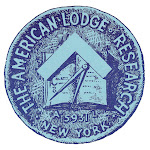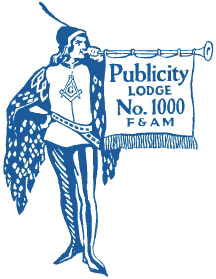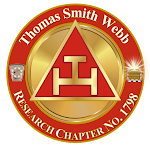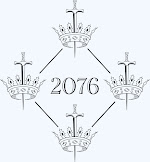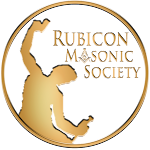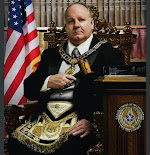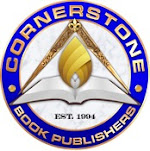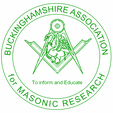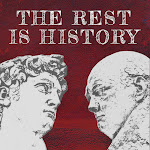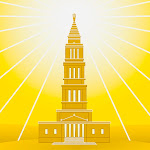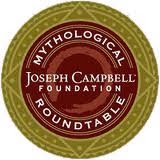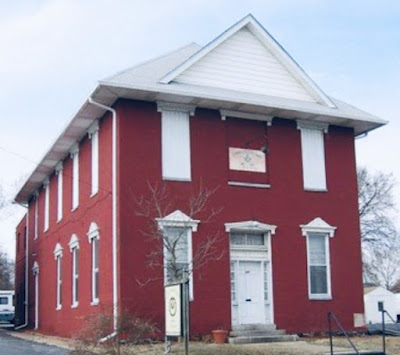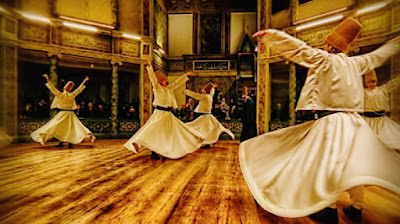We have a Ritual of Initiation upcoming at lodge in November, and our monthly magazine, The Herald, includes a few pages of educational reading focusing on a certain aspect of the EA° excerpted from Symbolical Masonry: An Interpretation of the Three Degrees by H.L. Haywood. (He was a member of our lodge a century ago, oddly enough.) Also in mind is Grand Lodge’s appeal on behalf of the Grand Lodge of Israel. Here are the relevant paragraphs:
Before a man can be persuaded to learn an art, he must realize his ignorance thereof; before he can be made to enter into a new life, he must be made to feel that he is in a natural state of ignorance in regard to that life. There is a certain method by which the candidate is prepared in our ceremonies that is designed to cause the Apprentice to know that, whatever may be his title and possessions in the world, he is poor, and naked, and blind as regards that new life which is Masonry. There is in this method no desire to humiliate him, as that word is understood, but there is every need that he experience humility, a very different thing.
Humiliation may come from disgrace, or some check of adverse fortune; humility is that lowliness of mind in which one becomes aware of his real position in the universe. To know one’s self is to be humble, for in the presence of the infinities of the universe an individual, be he the greatest of the great, is pitiably small and weak; “what is man that thou art mindful of him” is his cry, and he will be the last to strut with pride. A mere sense of humor alone would preserve a man against vanity, did he not also know that he is a frail creature, compounded of dirt and deity, hemmed in by ignorance, and weak every way. When a man compares himself with his fellows he may find cause for pride, but when he stands in the midst of that lodge which is itself a symbol of the cosmos, surrounded by emblems and images on which rests a weight of time more than that which lies upon the pyramids, where the All-Seeing Eye, symbol of omniscience, looks down upon all, he can but feel how frail, how unspeakably helpless and frail, he is. The worldling may eke out a modicum of pride in considering how much wealthier he may be, or more learned than another, but the Mason, acknowledging a law that demands he be perfect as the Father in Heaven is perfect, will be more inclined to cry “Depart from me, for I am a sinful man, O Lord.”
 |
| Black Cat Caboodle |
“Among the ancients,” writes Pierson, “the ceremony of discalceation, or the pulling off a shoe, indicated reverence for the presence of God.” The Pythagorean rule, that an initiate must “sacrifice and worship unshod” applied throughout the religious customs of antiquity. The priest removed “his shoes from off his feet” before entering the place of worship even as does the Muslim of today. Of this Mackey gives an interpretation as simple as it is wise! “The shoes, or sandals, were worn on ordinary occasions as a protection from the defilement of the ground. To continue to wear them, then, in a consecrated place, would be a tacit insinuation that the ground was equally polluted and capable of producing defilement. But, as the very character of a holy and consecrated spot precludes the idea of any sort of defilement or impurity, the acknowledgment that such was the case was conveyed symbolically by divesting the feet of all that protection from pollution and uncleanness which would be necessary in unconsecrated places. The Rite of Discalceation is, therefore, a symbol of reverence. It signifies, in the language of symbolism, that the spot which is about to be approached in this humble and reverent manner is consecrated to some holy purpose.
In the beginnings of the moral life of man, a place was made holy by being set apart, as the word literally means. The Sabbath was kept separate from other days; the Temple from other buildings; and the altar from all other spots of earth. This was a necessary teaching to cause men to recognize the mere existence of sacredness. But the floor of a Masonic lodge room is not made sacred in order to render other places defiled by contrast; rather is it to convince us that as the lodge is a holy place, so also should the whole world be, of which the lodge is a symbol. When men walk the common ways of life with bare feet, when they undertake every daily task with clean hands, when they seek out their fellowships with a pure heart, then will all life shine with the sanctity God intended, and the Universe be in fact, as well as theory, the Temple of Deity.
In the days before our era when astrology and alchemy were seriously received by great minds, the planets were believed to rule variously over the fates of life, and each planet was supposed to be in some wise linked up with a corresponding metal. Lead was Saturn’s metal, iron belonged to Mars, copper to Venus, gold to the sun, etc. To keep one of these metals in one’s possession was to invite the influence of the planet to which it was sacred. Consequently, as a Candidate came to the Mysteries, he was divested of metals lest he bring some unwelcome planetary influence into the sanctuary.
If we find a far-off echo of this custom in our own ceremonies, we may understand that the lodge would thus symbolically exclude every jarring element from its fellowship. We may further understand it in another sense, as meaning that the possessions which secure us the services of the world have no potency in the lodge.
Of this, as we may read in his booklet on “Deeper Aspects of Masonic Symbolism,” A.E. Waite has written with characteristic insight. His words have a finality of wisdom that may fitly conclude a study of destitution:
“The question of certain things of a metallic kind, the absence of which plays an important part, is a little difficult from any point of view, though several explanations have been given. The better way toward their understanding is to put aside what is conventional and arbitrary—as, for example, the poverty of spirit and the denuded state of those who have not yet been enriched by the secret knowledge of the Royal and Holy Art. It goes deeper than this and represents the ordinary status of the world, when separated from any higher motive—the world-spirit, the extrinsic titles of recognition, the material standards. The Candidate is now to learn that there is another standard of values, and when he comes again into possession of the old tokens, he is to realise that their most important use is in the cause of others. You know under what striking circumstances this point is brought home to him.”






